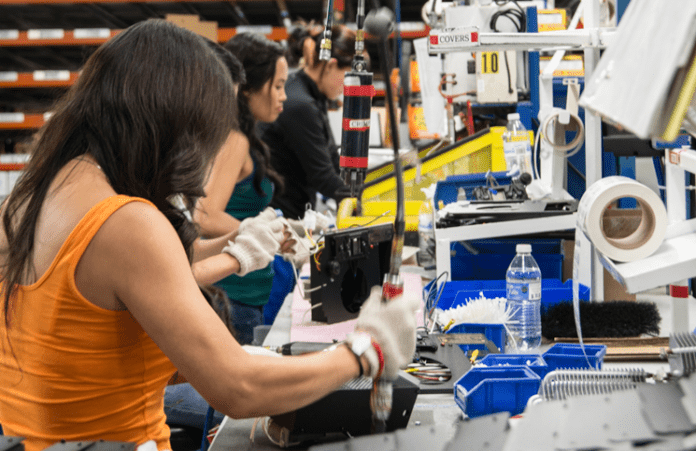
While the last few years have been strong for manufacturing in Southwest Washington, leaders in economic development are busy working to grow the industry now and in the years to come.
In order to do that, officials at the state and regional level are trying to predict where the industry is headed. Thanks in part to changes in technology, that’s not an easy thing to do.
Kristin Kautz, projects and grants manager for Impact Washington (a nonprofit organization specializing in manufacturing consulting services for manufacturers in the state), identified the top manufacturing sectors in the region as follows: computers and electronics; metals and machinery; food processing; wood and paper; and chemical manufacturing.
Trends affecting manufacturing
“’Smart manufacturing’ will continue to blur the line between IT and manufacturing,” explained Kautz. “Manufacturers are adopting robotics and equipment productivity sensors connected to your iPhone or iPad to give you instant feedback about how you’re operating and how to improve it… Think of the many products you see that tell you when it’s time for service or give you feedback on product performance. For example, my Epson printer: I get emails telling me that I am running out of ink, and to update my software to run the thing.”
Another area of emphasis, according to Kautz, is on quality certifications and productivity to meet the demands of customers.
“Many of our manufacturers are contract manufacturers, meaning they don’t make their own ‘widgets,’ but build something to order for others,” she said. “These types of manufacturers will see continued pressure to have quality certifications and be able to respond and deliver contracted products more quickly in order to compete. This will force more emphasis on productivity improvements.”
At the Columbia River Economic Development Council (CREDC), President Mike Bomar said he sees the continuation of automation as a trend in manufacturing.
“Companies will continue to invest in equipment and machinery, and that will increase the numbers of employees hired,” Bomar said.
While manufacturing is strong in the area, the challenge of developing a skilled workforce is a constant.
“Manufacturing companies are seeking to develop a validated talent pool to fulfill ongoing workforce needs, through screening, training and business cultural fit,” said Cass Parker, employment services manager at Workforce Southwest Washington (previously known as Southwest Washington Workforce Development Council). “For the employee, that means having the skills to perform a job, but it’s also important to have a good work ethic, be self-motivated, and fit within the cultural dynamic of the company.”
Bomar said that the CREDC works with more than 100 manufacturing businesses a year, and spends quite a bit of time assessing the workforce and challenges the company may be having, before focusing on how to help the business.
“We look at the trends and business processes or internal challenges, and then we look to our partners and resources,” Bomar said. “We also offer export assistance, both federal and state. If a business is looking to enter a new market, we look at where they might have the best options. We provide business assistance in regulatory and permitting, and provide feedback to policymakers.”
Predictions for coming year and beyond
Over this year and next, Impact Washington expects to see a gradual increase in manufacturing employment totals, and a stronger need for highly-skilled workers, “especially machinists, welders and technicians,” Kautz said.
Part of the need for these workers is because of the gap between the number of open positions and the number of workers who are qualified to take on those jobs, but there’s more to it.
“Not only are skilled employees ‘aging out,’ but also many of our local manufacturing employers are privately held companies whose first or second generation leaders are transitioning out, necessitating thoughtful preparation and leadership development to ensure the companies survive changes in leadership,” said Kautz.
Parker agreed that the need for more skilled workers will continue, and expects to see a shift in the growth rate of the manufacturing industry.
“The shift will be due to two factors: manufacturing employers are confronting the urgency to fulfill vacancies with steadfast determination; and [Workforce Southwest Washington] and the [Columbia Willamette Workforce Collaborative] will be making collaborative efforts to generate public awareness and interest for the fascinating and lucrative careers within the manufacturing industries.”
Kautz noted that the region’s manufacturing industry is alive and well and still recovering from recession.
“It is mainly clean and bright, rather than dark and dirty,” she said. “Average manufacturing wages are higher than many other sectors. Innovative and forward-looking companies are prospering. New gazelle (fast growing) companies are emerging, [and] are increasingly focusing on export sales. The strong dollar is impacting exports, but overall, it’s an excellent strategy for the future, since 95 percent of the world’s markets are outside the U.S.A.”



